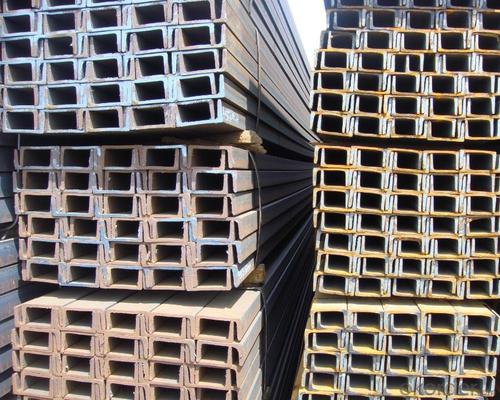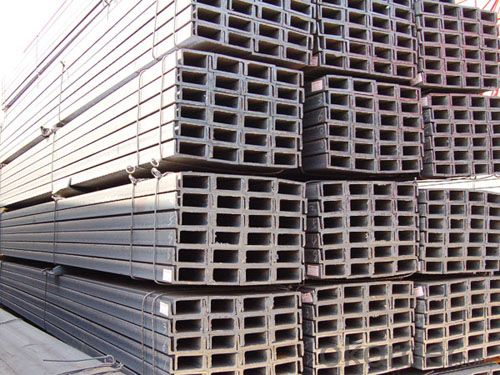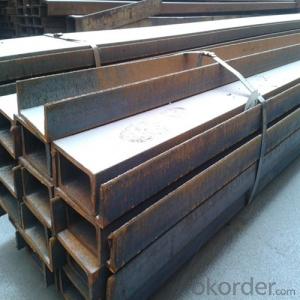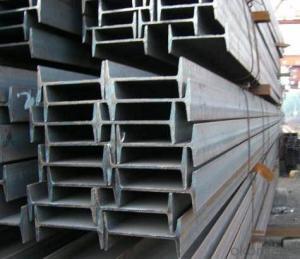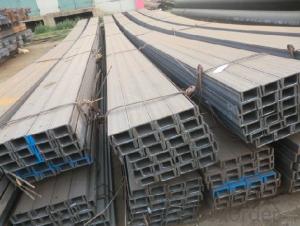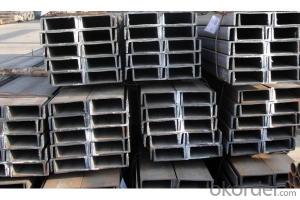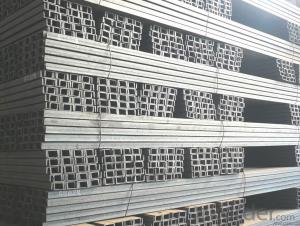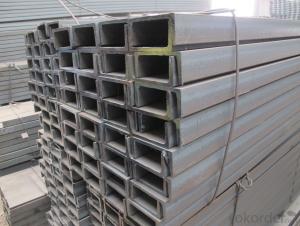GB U Channel Steel
- Loading Port:
- China Main Port
- Payment Terms:
- TT or LC
- Min Order Qty:
- -
- Supply Capability:
- -
OKorder Service Pledge
OKorder Financial Service
You Might Also Like
Product Description:
OKorder is offering GB U Channel Steel at great prices with worldwide shipping. Our supplier is a world-class manufacturer of steel, with our products utilized the world over. OKorder annually supplies products to European, North American and Asian markets. We provide quotations within 24 hours of receiving an inquiry and guarantee competitive prices.
Product Applications:
GB U Channel Steel are ideal for structural applications and are widely used in the construction of buildings and bridges, and the manufacturing, petrochemical, and transportation industries.
Product Advantages:
OKorder's GB U Channel Steel are durable, strong, and resist corrosion.
Main Product Features:
· Premium quality
· Prompt delivery & seaworthy packing (30 days after receiving deposit)
· Corrosion resistance
· Can be recycled and reused
· Mill test certification
· Professional Service
· Competitive pricing
Product Specifications:
Manufacture: Hot rolled
Grade: Q195 – 235
Certificates: ISO, SGS, BV, CIQ
Length: 6m – 12m, as per customer request
Packaging: Export packing, nude packing, bundled
Chinese Standard (H*W*T) | Weight (Kg/m) | 6m (pcs/ton) | Light I (H*W*T) | Weight (Kg/m) | 6m (pcs/ton) | Light II (H*W*T) | Weight (Kg/m) | 6M |
100*68*4.5 | 11.261 | 14.8 | 100*66*4.3 | 10.13 | 16.4 | 100*64*4 | 8.45 | 19.7 |
120*74*5.0 | 13.987 | 11.9 | 120*72*4.8 | 12.59 | 13.2 | 120*70*4.5 | 10.49 | 15.8 |
140*80*5.5 | 16.89 | 9.8 | 140*78*5.3 | 15.2 | 10.9 | 140*76*5 | 12.67 | 13.1 |
160*88*6 | 20.513 | 8.1 | 160*86*5.8 | 18.46 | 9 | 160*84*5.5 | 15.38 | 10.8 |
180*94*6.5 | 24.143 | 6.9 | 180*92*6.3 | 21.73 | 7.6 | 180*90*6 | 18.11 | 9.2 |
200*100*7 | 27.929 | 5.9 | 200*98*6.8 | 25.14 | 6.6 | 200*96*6.5 | 20.95 | 7.9 |
220*110*7.5 | 33.07 | 5 | 220*108*7.3 | 29.76 | 5.6 | 220*106*7 | 24.8 | 6.7 |
250*116*8 | 38.105 | 4.3 | 250*114*7.8 | 34.29 | 4.8 | 250*112*7.5 | 28.58 | 5.8 |
280*122*8.5 | 43.492 | 3.8 | 280*120*8.2 | 39.14 | 4.2 | 280*120*8 | 36.97 | 4.5 |
300*126*9 | 48.084 | 3.4 | 300*124*9.2 | 43.28 | 3.8 | 300*124*8.5 | 40.87 | 4 |
320*130*9.5 | 52.717 | 3.1 | 320*127*9.2 | 48.5 | 3.4 | |||
360*136*10 | 60.037 | 2.7 | 360*132*9.5 | 55.23 | 3 |
FAQ:
Q1: Why buy Materials & Equipment from OKorder.com?
A1: All products offered byOKorder.com are carefully selected from China's most reliable manufacturing enterprises. Through its ISO certifications, OKorder.com adheres to the highest standards and a commitment to supply chain safety and customer satisfaction.
Q2: How do we guarantee the quality of our products?
A2: We have established an advanced quality management system which conducts strict quality tests at every step, from raw materials to the final product. At the same time, we provide extensive follow-up service assurances as required.
Q3: How soon can we receive the product after purchase?
A3: Within three days of placing an order, we will begin production. The specific shipping date is dependent upon international and government factors, but is typically 7 to 10 workdays.
Q4: What makes stainless steel stainless?
A4: Stainless steel must contain at least 10.5 % chromium. It is this element that reacts with the oxygen in the air to form a complex chrome-oxide surface layer that is invisible but strong enough to prevent further oxygen from "staining" (rusting) the surface. Higher levels of chromium and the addition of other alloying elements such as nickel and molybdenum enhance this surface layer and improve the corrosion resistance of the stainless material.
Q5: Can stainless steel rust?
A5: Stainless does not "rust" as you think of regular steel rusting with a red oxide on the surface that flakes off. If you see red rust it is probably due to some iron particles that have contaminated the surface of the stainless steel and it is these iron particles that are rusting. Look at the source of the rusting and see if you can remove it from the surface.
Images:
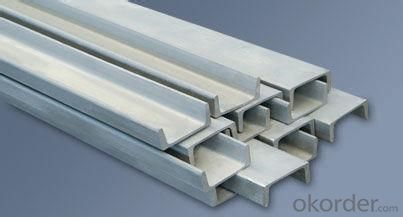
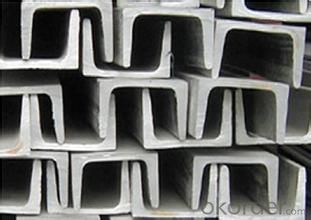
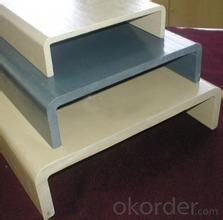
- Q: Can steel I-beams be used for hospitality establishments?
- Yes, steel I-beams can be used for hospitality establishments. Steel I-beams are known for their strength and durability, making them a popular choice for structural support in various buildings, including hospitality establishments. They provide excellent load-bearing capacity, allowing for open and spacious interiors without the need for additional support columns. Additionally, steel I-beams can withstand harsh weather conditions and are resistant to fire, making them a safe choice for hospitality establishments. Furthermore, their versatility allows for creative architectural designs and flexibility in floor plans. Overall, steel I-beams are a reliable and efficient choice for constructing hospitality establishments.
- Q: Channel and I-beam are commonly used in construction sites. It is better to have on-site construction drawings, thank you
- Channel and I-beam are usually used to build floors.
- Q: How do steel I-beams perform in terms of earthquake resistance for renovations?
- Steel I-beams are known for their exceptional strength and durability, making them an excellent choice for earthquake-resistant renovations. The shape of the I-beam provides a high strength-to-weight ratio, allowing it to withstand the lateral forces generated during an earthquake. During an earthquake, buildings experience strong shaking, which can lead to structural damage and collapse. However, steel I-beams have the ability to flex and absorb the energy from the seismic waves, reducing the impact on the overall structure. This flexibility allows them to withstand the dynamic loads and prevent catastrophic failure. In addition to their inherent strength, steel I-beams can be further reinforced to enhance their earthquake resistance. This can be achieved by using thicker and higher-grade steel, adding additional bracing or cross-members, or implementing various structural engineering techniques such as moment frames or shear walls. These reinforcements increase the overall rigidity and stiffness of the structure, minimizing the deflection and displacement during an earthquake. Moreover, steel I-beams have the advantage of being non-combustible, which adds an extra layer of safety in case of fire-induced earthquake damage. Unlike other materials, such as wood or concrete, steel does not burn or degrade when exposed to high temperatures, ensuring the structural integrity remains intact. It's important to note that the earthquake resistance of a renovated structure depends on various factors, including the design, quality of construction, and adherence to building codes and regulations. Engaging experienced structural engineers and contractors who specialize in seismic retrofitting is crucial to ensure the steel I-beam renovations are carried out correctly and effectively. Overall, steel I-beams are a reliable and efficient choice for earthquake-resistant renovations. Their inherent strength, flexibility, and ability to be reinforced make them a popular solution to enhance the seismic performance of existing structures.
- Q: Are steel I-beams suitable for supporting heavy machinery?
- Steel I-beams are indeed appropriate for supporting heavy machinery. Their exceptional durability and load-bearing capacity render them widely utilized in construction and industrial settings. Specifically engineered to withstand substantial loads and offer structural reinforcement, the I-beam shape enables efficient weight distribution, making it the perfect choice for supporting heavy machinery. Furthermore, steel I-beams exhibit remarkable resistance to deformation, ensuring their dependability in demanding tasks.
- Q: How do you calculate the moment of inertia for steel I-beams?
- To calculate the moment of inertia for steel I-beams, you need to determine the dimensions of the beam, such as the height, width, and thickness of the flanges and web. Then, you can use the formulas provided by engineering standards or textbooks to calculate the moment of inertia based on these dimensions. It involves summing the contributions from the individual components of the beam to obtain the total moment of inertia.
- Q: How many kilograms per kilo is I-beam 16?
- The theoretical weight of No. 16 I-beam is 20.513 kg / m..
- Q: How do steel I-beams perform in high-moisture areas?
- Provided they are adequately safeguarded against corrosion, steel I-beams generally exhibit favorable performance in high-moisture locales. Steel, renowned for its resilience and strength, can endure harsh moisture conditions commonly encountered in coastal regions or areas prone to elevated humidity or moisture levels. However, if exposed to moisture without proper protection, steel I-beams may become susceptible to rust and corrosion, which can gradually undermine their structural integrity. To guarantee optimal performance in high-moisture settings, it is imperative to implement effective corrosion prevention measures. Typically, this entails the application of protective coatings or paints to the surface of the steel I-beams. These coatings serve as a barrier against moisture, effectively averting direct contact between the steel and the surrounding environment. In addition, regular inspections and maintenance should be conducted promptly to identify and address any indications of corrosion or damage. It is worth noting that exceptionally corrosive environments, characterized by high salt content or exposure to chemicals, may necessitate additional measures. In such cases, stainless steel or galvanized steel I-beams are often recommended due to their enhanced resistance against corrosion. Stainless steel, containing chromium, develops a passive oxide layer that offers excellent protection against moisture and corrosion. Conversely, galvanized steel is coated with a layer of zinc, which acts as a sacrificial barrier, preventing the steel from encountering moisture. In conclusion, steel I-beams can perform admirably in high-moisture areas if effectively safeguarded against corrosion. By implementing appropriate preventive measures, such as coatings, regular maintenance, and, if required, utilizing stainless steel or galvanized steel, the structural integrity and longevity of the I-beams can be preserved even in challenging moisture-rich environments.
- Q: Can steel I-beams be used for automotive manufacturing plants?
- Yes, steel I-beams can be used for automotive manufacturing plants. Steel I-beams are commonly used in construction due to their strength and load-bearing capabilities, making them suitable for supporting heavy machinery and equipment in automotive manufacturing plants.
- Q: Can steel I-beams be used for staircases or ramps?
- Indeed, staircases or ramps can utilize steel I-beams. Construction frequently employs steel I-beams given their robustness and endurance. In the case of staircases, I-beams can be horizontally positioned to fashion the steps, thus establishing a sturdy and secure framework. Similarly, for ramps, I-beams can be employed to establish an inclined surface that facilitates effortless accessibility. The durability of steel I-beams guarantees that the staircase or ramp can bear the weight of individuals utilizing them. Moreover, steel I-beams can be tailored to various dimensions and configurations, thereby allowing for flexibility in the design and construction of staircases and ramps.
- Q: How are steel I-beams protected against corrosion?
- Various methods are employed to safeguard steel I-beams against corrosion. The most prevalent approach entails the application of a protective coating on the beam's surface. This coating acts as a barrier, preventing direct contact between the steel and moisture or oxygen, thus minimizing the risk of corrosion. Different types of coatings are utilized based on specific application requirements. For example, a commonly used coating for steel I-beams is a layer of zinc, known as galvanization. This process involves immersing the beams in molten zinc, creating a protective layer. Zinc, as a sacrificial metal, corrodes before the steel, providing an additional layer of protection. Another corrosion protection method for steel I-beams is the application of paint or epoxy. This not only creates a physical barrier against moisture and oxygen but also serves as a decorative finish. The choice of paint or epoxy must be carefully made to ensure compatibility with the steel and withstand environmental conditions. In certain cases, a process called cathodic protection is employed to protect steel I-beams. This involves connecting the beams to a sacrificial anode, such as magnesium or aluminum, which corrodes instead of the steel. This method is commonly used in marine environments where the beams are exposed to saltwater. Regular maintenance and inspection play a vital role in preventing corrosion on steel I-beams. Timely addressing of any signs of damage or deterioration is crucial to prevent further corrosion and maintain the beams' structural integrity.
Send your message to us
GB U Channel Steel
- Loading Port:
- China Main Port
- Payment Terms:
- TT or LC
- Min Order Qty:
- -
- Supply Capability:
- -
OKorder Service Pledge
OKorder Financial Service
Similar products
Hot products
Hot Searches
Related keywords



